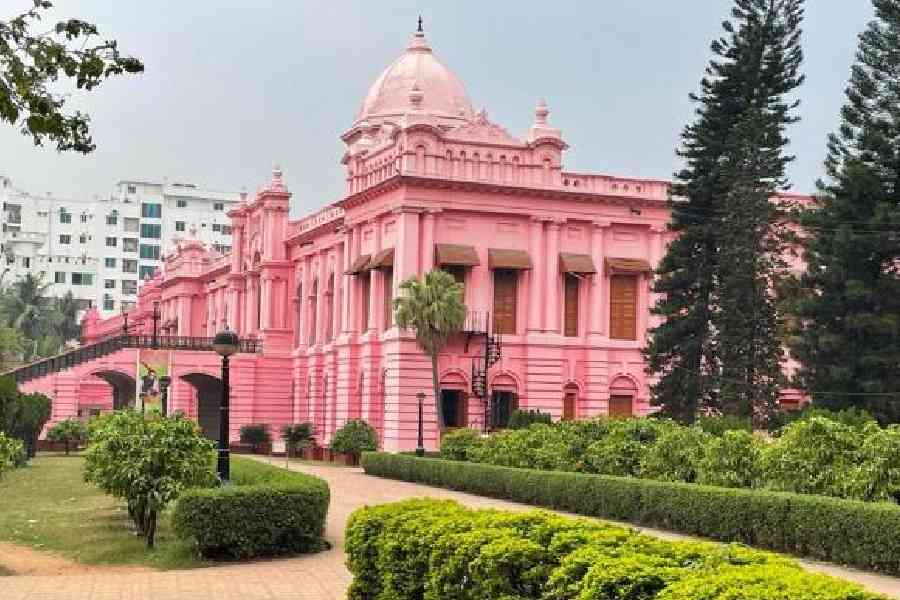‘Water, water everywhere nor any drop to drink.’
Samuel Taylor Coleridge’s lines come to mind when you enter the Barishal district of Bangladesh. A flight from Chittagong to Barishal with a layover in Dhaka barely prepares you for the ‘Venice of Bangladesh’, as they call it. The small, unassuming airport is the gateway to a land networked with waterways and canals that run through quaint villages with lush green fields. Far from the madding traffic in Dhaka, Barishal on the banks of the Kirtonkhola River is an idyllic land.
The city itself is a confluence of cultures. The Shankar Mutth founded over a century ago coexists with mosques like Baitul Aman Jame Masjid and the Oxford Mission Church, reportedly the second-largest church in Asia in terms of its expanse. Barishal is also synonymous with fish and its variety is a major draw for fish lovers. Then there is the exotic floating guava market where farmers line up their boats full of guavas and other fruits in the canals to sell their produce.
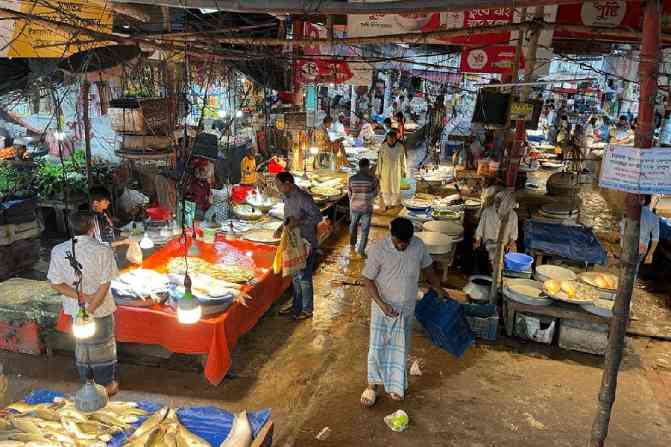
Barishal fish market
But this visit to Barishal wasn’t merely touristy. Roots, a potent concoction of nostalgia, pain, joy and curiosity, often wields the power to lure those who are eager to trace where they come from, brought up as they may have been on a diet of tales of yore. Such tales often translate into memories that interlock with history — both individual and collective.
It was in search of this history and to reimagine what may have been but is not, that we decided to make a trip to the riverine country. Our itinerary raised many an eyebrow. We had decided to arrive in Dhaka, do a day trip to Mymensingh. Thereafter, hop on to a train for Chittagong to spend a couple of days there before taking a flight to Barishal. From Barishal, we had decided to drive down to Betagi and Goila, and close the loop by doing a 4.5-hour “business class” bus journey to Dhaka over the newly constructed Padma bridge before finally flying back to Calcutta.
It was only when we were there that I realised one is spoilt for choice when it comes to travelling from one city to another in Bangladesh and that apparently remote cities such as Barishal comprising predominantly waterbodies also had strong connectivity thanks to the multipurpose Padma Bridge inaugurated last year.
Betagi and Goila were unfamiliar terrain for my friends in Dhaka. Travel houses, too, had scant knowledge of these places. I often heard my father mention these names with a sense of wistful yearning. He was barely 12 when my paternal grandparents moved to ‘epar Bangla’, but childhood memories of Betagi and Goila lived on. In those days, travelling to and fro from Barishal was a challenge as water transport was the only option. Today, with improved connectivity, one can opt for a flight, bus or a river cruise.
Betagi, where a few Hindu households still remain, has a quaintly rural feel to it. Making our way along its unmetalled roads in the interiors, we arrived at a district office in front of a pond and adjacent to a temple that used to house a deity. “It got stolen one fine morning,” recalled a lady in a sari, sindoor, bindi, red and white bangles, visibly happy to see us strolling around. Our common religious identity seemed to have led to a spontaneous bonding. “Following the theft, we keep the deities in our homes while the temple has only a clay pot that emerged from the ground. We offer our prayers there on special occasions,” she added.
The district office today stands at a place where once stood the office from where my grandfather, the then zamindar’s nayeb, would operate. His house, half a kilometre away, is in a state of ruin with tree roots entwined with its walls weaving tales that the edifice bears witness to.
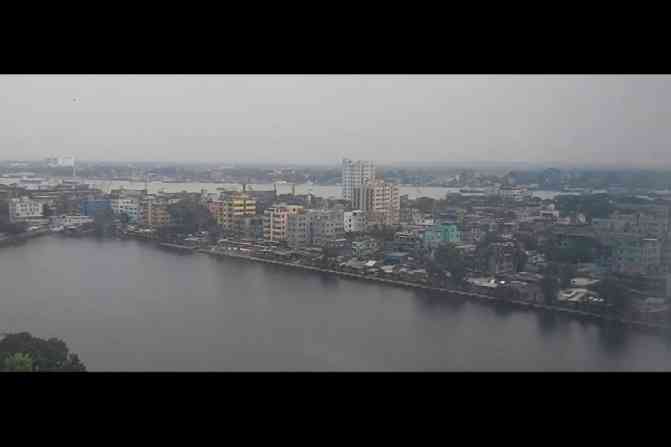
A panoramic view of Chattogram with the River Karnaphuli
Goila is more of a township, with a large market and vibrant neighbourhood. Eighty years ago, well-established Hindu households were a majority here. Today very few remain as most have migrated elsewhere in search of better opportunities. Of these, one or two families celebrate Durga Puja in the premises of their large houses, but it’s usually a low-key affair.
Dhaka, on the contrary, sees some very big Durga Pujas. The Dhakeswari Temple, the state-owned largest Hindu temple of Bangladesh, is the starting point for all Hindu festivals. Built in the 12th century by the Sena dynasty, the temple, which houses a small but resplendent Durga, has undergone several changes and renovations, especially after the 1971 war, when it was severely damaged.
Old Dhaka is known for its traffic jams and resilient spirit. Buses, rickshaws, carts, people, cars — big and small — jostle for space as they manoeuvre their way, sometimes through the narrowest bylanes with overhead wires dangling at arm’s length. New Dhaka, which includes upscale districts such as Gulshan and Banani, is a picture in contrast, with trendy eateries, fancy cafes, sweet shops and imposing sari shops.
Dhaka University figures somewhere in between old and new Dhaka. Founded in 1921, it is the oldest university in the country and is steeped in history seeping from its grand walls and vibrant canteens.
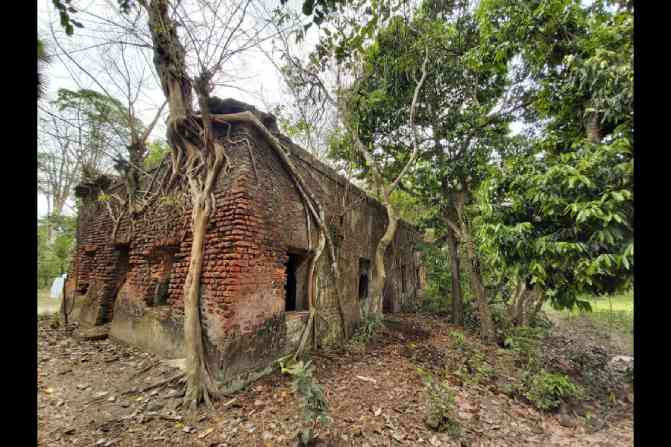
Betagi: A house enveloped by a tree that has grown roots over eight decades
Ahsan Manzil, a palace-turned-museum, and formerly the residence of the Nawab of Dhaka in the Kumartoli area, is another interesting landmark. It faces the Buriganga river, the banks of which were once upon a time the prime location for trade and today has the Sadarghat River Boat Terminal, one of the largest river ports used daily by nearly 1.5 lakh people who avail of the river boats to commute.
It was in Ahsan Manzil that the All India Muhammadin Conference was held in 1905, which laid the foundation of the All India Muslim League. It fell into disuse due to financial constraints and in 1985 the government acquired the palace and property, renovated it and handed it over to the Bangladesh National Museum.
Talking of museums, the Bangabandhu Memorial Museum — Sheikh Mujibur Rehman’s residence where he and most members of his family were assassinated — and the Liberation War Museum better known as the Muktijuddho Jadughor, are awe-inspiring. The latter was established in 1996 to commemorate the heroic struggle of Bangladeshis who, led by Sheikh Mujibur Rahman, fought for their democratic and national rights following the genocide unleashed by the military rule in the Islamic Republic of Pakistan.
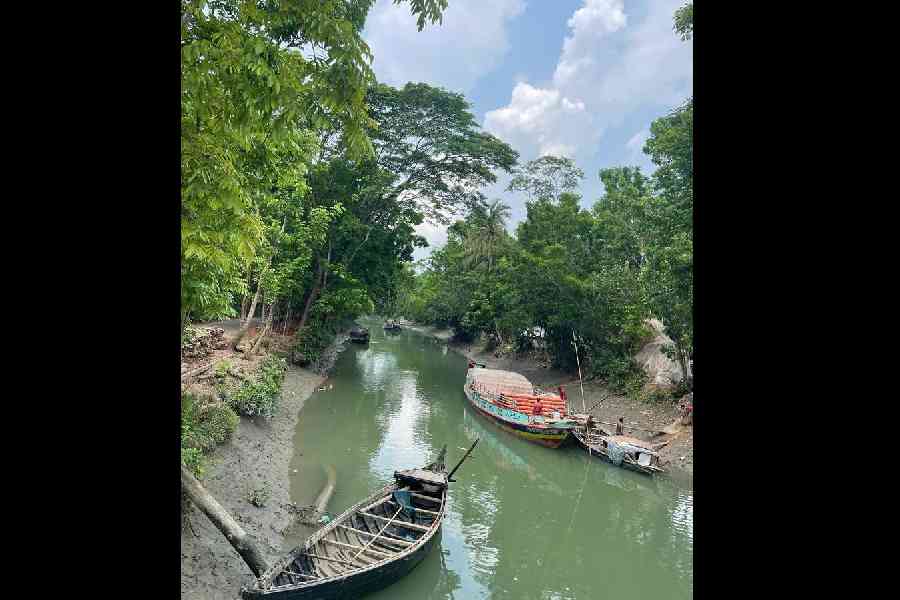
Barishal: Waterways comprise a major means of transportation
The narrative that the museum unfolds through precious documents, exhaustive coverage in the electronic and print media, and a recreation of the chilling ambience with materials dating back to that era is moving. It underscores the ideals and aspirations of the freedom fighters who fought for an inclusive society, with people of different religions being united by a common language, Bangla.
Speaking of inclusiveness, Mymensingh, a three-hour drive from Dhaka, once epitomised that inclusive spirit. On the banks of the Brahmaputra river, it is known for its educational institutions — Bangladesh Agricultural University, Jatiya Kabi Kazi Nazrul Islam University, its engineering and medical colleges and a cadet college for girls.
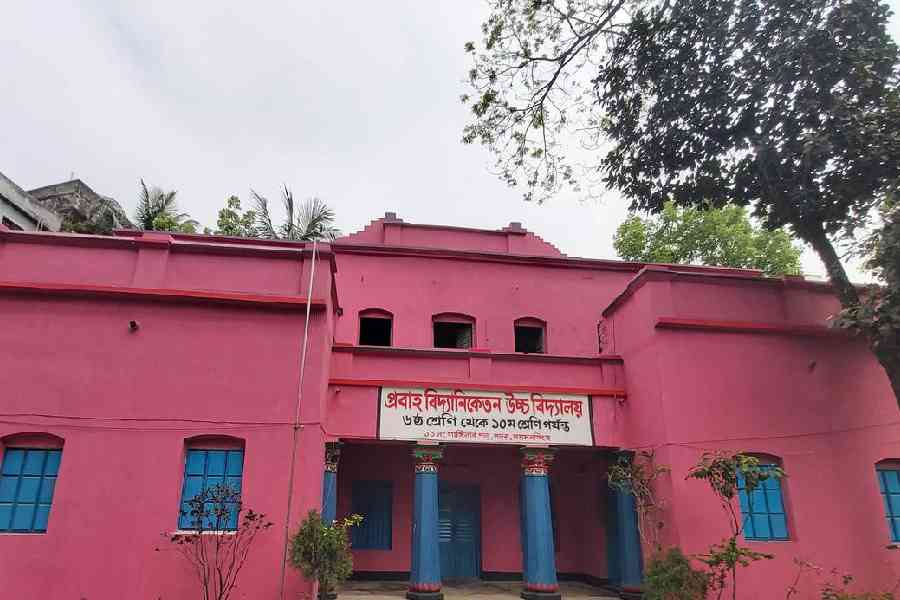
Mymensingh: The home of my maternal grandfather that is now a school
We, however, went in search of another house and printing press — Sen Bari and Sen Press — which, in the Forties, were fairly well-known in the Ganginapar area. That is where my mother spent her childhood days in a huge joint family. We found the former but not the latter. The huge house had been turned into a girls’ school, although the facade of the house remained intact. Bangladeshis are known for their warmth and hospitality. We experienced that in Mymensingh with folks from the neighbourhood proactively helping us locate and identify the house we had come in search of.
Shashi Lodge, a magnificent palace that sprawls nine acres with a pond, a marble fountain, a two-storied bathing pavilion, makes for a picturesque setting in the midst of the city. Suryakanta Acharya Chowdhury, the successor of Muktagacha Zamindar dynasty, built this palace and named it Shashi Lodge after the name of his adopted son Shoshikanta. On any weekend, this is a go-to place for youngsters and couples looking for some quietude.
Quietude also characterises parts of Chittagong, better known as Chattogram. A train ride in a first-class compartment takes us to our port of call, which was once a major seaport. Situated on the banks of the Karnaphuli river between the Chittagong Hill Tracts and Bay of Bengal, Chattogram is the second-largest city in Bangladesh. Given its strategic geographic location, it has potential for both a blue economy and for transforming into the commercial capital.
One of the popular attractions in this city is the Patenga Beach, south of Chattogram and close to the Bangladesh Naval Academy and Chittagong Boat Club. This is the point where the Karnaphuli river meets the Bay of Bengal, and is an ideal location to watch the rising or setting sun.

A ship docked at Chattogram
The view was indeed spectacular, energising us to journey to our roots in Barishal and thereafter return to Dhaka in an immensely comfortable “business class” bus. All the whilethe house that literally grew roots in Barishal, the house that metamorphosed into a girls’ school in Mymensingh, the setting sun on the Patenga Beach in Chattogram, the polluted waters of the Buriganga in Dhaka kept surfacing in a montage of scenes that played out in my mind’s eye. It summed up the essence of what was as much as what can be by transcending man-made divides.
Vishnupriya Sengupta is a former journalist, independent researcher and works for a professional services firm.


